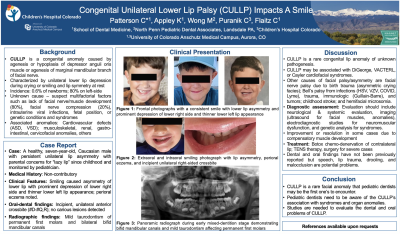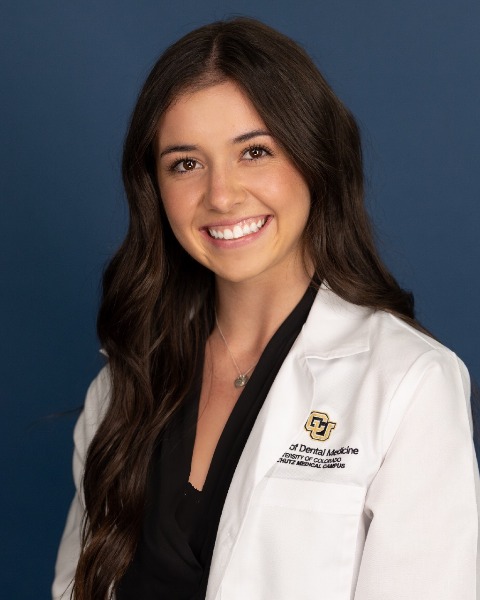Oral Pathology
298 - Congenital Unilateral Lower Lip Palsy and Its Impact on Smiling


Chloe Patterson (she/her/hers)
Student
University of Colorado School of Dental Medicine
University of Colorado School of Dental Medicine
Arvada, Colorado, United States- KA
Kaylee Appley, BS
University of Colorado School of Dental Medicine
- MW
Michael Wong, DDS
North Penn Pediatric Dental Associates
Lansdale 
Chaitanya P. Puranik, B.D.S., M.S., M.Dent.Sci., Ph. D. F.A.A.P.D., Diplomate (he/him/his)
Residency Program Director
Children's Hospital Colorado
Children's Hospital Colorado and School of Dental Medicine, University of Colorado Anschutz Medical Campus
Aurora, Colorado, United States- CF
Catherine M. Flaitz, DDS, MS
Professor and Chair, Diagnostic Sciences; Adjunct Pediatric Dental Faculty
University of Colorado School of Dental Medicine, Aurora, CO
Aurora, Colorado, United States - CF
Catherine M. Flaitz, DDS, MS
Professor and Chair, Diagnostic Sciences; Adjunct Pediatric Dental Faculty
University of Colorado School of Dental Medicine, Aurora, CO
Aurora, Colorado, United States 
Chaitanya P. Puranik, B.D.S., M.S., M.Dent.Sci., Ph. D. F.A.A.P.D., Diplomate (he/him/his)
Residency Program Director
Children's Hospital Colorado
Children's Hospital Colorado and School of Dental Medicine, University of Colorado Anschutz Medical Campus
Aurora, Colorado, United States
Presenting Author(s)
Co-Author(s)
Research Mentor(s)
Program Director(s)
Introduction: Congenital unilateral lower lip palsy (CULLP), an uncommon congenital anomaly of the depressor anguli oris, is found in 0.6% of newborns with left side predominance (80%). CULLP is characterized by unilateral lower lip depression during crying or smiling while the face remains symmetric at rest. Notably, it can mimic other forms of facial palsy in children.
Case Report: 7-year-old male presented to pediatric dentist for routine care. The pediatrician was monitoring an asymmetry in the lower lip that was becoming more noticeable when smiling. Facial symmetry was observed at rest, and a neurological assessment revealed lower left lip weakness with normal sensation. End-to-end occlusion of left lateral incisors and perioral dermatitis were observed. The child was referred to pediatric plastic surgery for treatment options.
Conclusion: Recognizing CULLP is important to differentiate it from other facial palsies that may affect oral function or be associated with systemic diseases and syndromes.
Identify Supporting Agency and Grant Number:

.jpg)